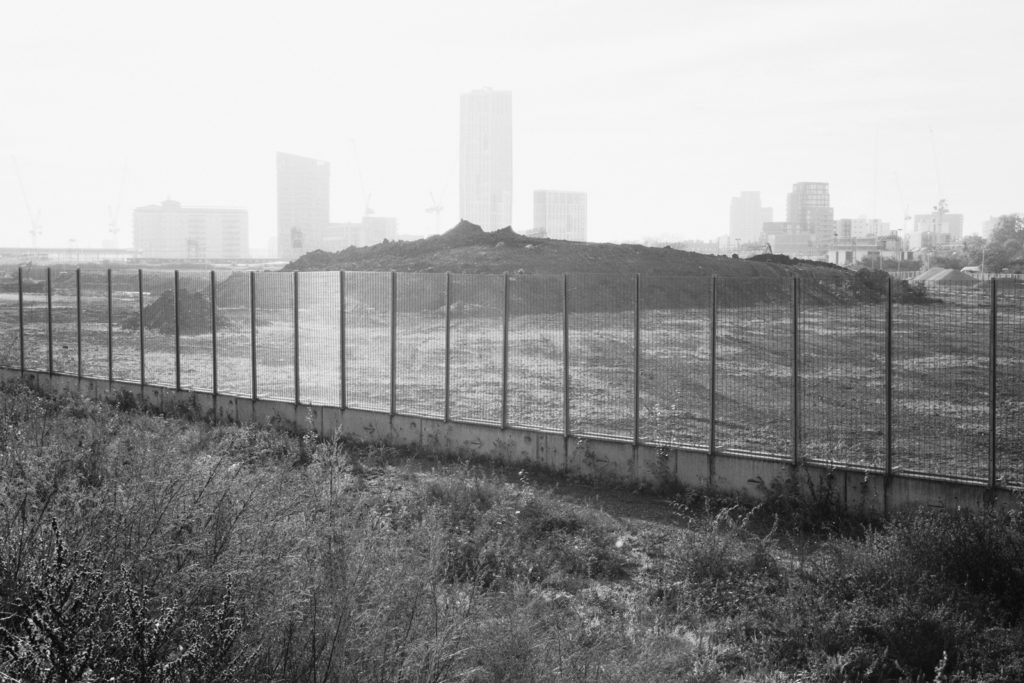Felipe Restrepo is a photographer based in United Kingdom. Stretching down through east London to the River Thames, the River Lea and its valley compass a vast area with rich history of development and exploitation. In the following series, the photographer’s aim was to build an open-ended set of images to explore and interrogate the human-landscape relationship.
Let’s start from the beginning. Tell us about how you got into photography.
First of all, thank you for your interest in my work and the opportunity to speak about it. I got into photography through movies and friends. When I realised you could summon so many things in a frame I bought a camera and started playing with it. Then I took photographs for many years without any sense of direction until another good friend of mine showed me the capabilities of photography to evoke and suggest meanings and narratives in a very deep and poetic level.
Lea Valley has heterogeneous characteristics to show: nature, factories, residential areas. What brought you to this peculiar land?
I think I know the Lea Valley quite well as I have been living nearby for almost 10 years. Before I started this project I used to go there to escape the city and explore the canals, the wedlands, the woods. I find the Lea Valley a very complex, rich and fascinating subject matter. One day I realised I could explore all those elements you mentioned and make a photography project out of it – I got so excited and I immediately started working on it.
Why did this location play a key role in the second industrial revolution?
While doing a little research for the project I read that around 100 years ago the Lea Valley was sort of the Silicon Valley of its time. That gives you an idea on how important the area was. So many important industries developed along the valley, among others, aeronautics, telecommunications, chemicals, etc.
What kind of relationship did you develop with the people in your portraits?
The encounters are generally brief, no more than a couple of minutes, and it works fine for me as I don’t want to become too familiar with my subjects before taking their photographs. Then, if they seem to be interested, I talk a little bit more in detail about the project. That’s pretty much it.
There is this picture with the safe camera under a bridge. It really hits me because in some photographs above we can see people who have gained their private space in nature. Can you tell us more about this piece?
That is the photograph of one of the last bridges that crosses the River Lea, near where it debouches into the Thames. That image introduces a very contemporary and disconcerting element to the series, and serves precisely as a bridge between nature and the city. On the other hand, I think somehow the series also plays with the idea of technology, development and anachronism.
Having seen your previous series, Lea Valley is subsequently a black & white work. Why did you choose this medium over color?
Black & white is a concept on its own right, it is indeed one of the most important elements in my project, and its evocative qualities help me convey effectively the concepts I am exploring, without distractions. When is done right, is an aesthetic pleasure.
What is the proper way of presenting these works in natural size? Are they framed prints? Do you intend to create a photobook?
When I first started this project, I always visualised it as a series in a photobook – which I think is quite convenient as the sequencing and paring helps you find a structure and see clearly what other elements you can either introduce or remove. The size of the prints for an exhibition, for example, is something that I would still need to figure out as I only have small prints.
Do you listen to music while editing your series?
I do. When I go through my archives, music helps me find a mood, a tempo, etc. And finally I believe music is the supreme form of art and that’s what other arts try to replicate.
More on his website.













